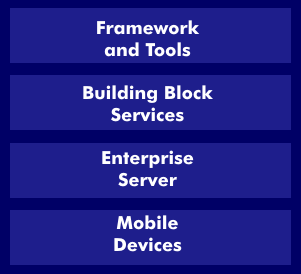.NET
NET is Microsoft's application platform for building and running web services and web applications. The Web Application Server was developed for Windows and includes a collection of application programming interfaces( API) for developers and a runtime environment. .NET is based on open standards, such as HTTP and the Extensible Markup Language(XML), is vendor and platform independent, and thus offers unrestricted communication over the Internet. The Microsoft concept assumes that the Internet is essentially adapted to the user. In this context, the applications are user-specific. Access to e-mails, to the personal appointment calendar or to important company data is facilitated.
The history of .NET
The first pre-release version of .NET appeared in 2000, followed two years later by .NET 1.0 with a development environment and Visual Studio .NET 2002. .NET is offered in different variants, namely as a runtime environment with the required Base Class Libraries( BCL), as a free Software Development Kit( SDK) for developers and as Microsoft Visual Studio .NET. Beginners and students receive a free version of Microsoft Visual Studio Express Editions, but with restrictions compared to the commercial Standard and Professional variants.
Since January 2008, the source code for large parts of the framework has been available to independent developers for debugging. In November 2009, Microsoft released .NET Micro Framework 4.0, introduced in September 2006, for programming compact devices with low performance parameters as open source under Apache 2.0.
Instead of machine code that can be executed directly by the operating system, .NET's compiler produces the Common Intermediate Language( CIL) for the Common Language Runtime( CLR) virtual machine from each programming language. Via a JIT compiler, which is a component of the CLR, the intermediate code is converted into machine code and processed by the processor. By accessing functions of the operating system, applications can be developed for different types of devices, including cell phones or PDAs. The main components are the Common Language Runtime (CLR), a Base Class Library (BCL) and a set of tools. Software that runs using the CLR is referred to as "managed". Older COM programs can be run like .NET features using .NET encapsulations (wrappers) of Interop technology.
Platform for multiple programming languages
The .NET platform is suitable for development with multiple programming languages, including Visual Basic, Visual C++, or Delphi. Complex .NET projects can therefore be assembled from different languages. Conceptually, .NET consists of four components Frameworks and Tools, Building Block Services, Enterprise Servers and Mobile Devices.
The XML-based.NET framework is responsible for the individual applications and regulates access to files. It also provides the user interface and web technologies. In the framework, a Web services layer with the Common Language Runtime (CLR) provides advanced language support and can run programs in multiple languages. Furthermore, the .NET framework includes ASP.NET, a class library, the Framework Class Library( FCL), the .NET Languages Including C-Sharp (C#) and the Visual Studio.NET.
The Building Blocks Services support always-on Internet services, code updates, and search services, and the Mobile Devices allow applications to run on cell phones, smart phones, and PDAs.
.NET supports multiple programming languages, allowing it to be used for cross-platform applications. All .NET languages must conform to the Common Language Specifications( CLS). Microsoft offers several .NET programming languages with Visual Basic.NET, Visual C#.NET, Visual C++.NET and Jscrict.NET.
Since attention was paid to high execution speed when implementing .NET, the programs are also suitable for CAD systems, animation programs or computer games. With the .NET Framework 4.0 announced for 2010, which is to be launched together with the Visual Studio 2010 development environment, support for systems with multi-core processors is also expected.

